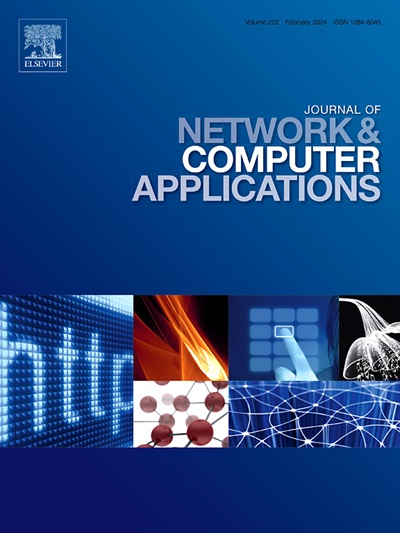基于网络编码的可扩展视频广播D2D协同恢复方案
IF 8
2区 计算机科学
Q1 COMPUTER SCIENCE, HARDWARE & ARCHITECTURE
引用次数: 0
摘要
本文研究了可扩展视频广播(SVB)系统的协作恢复问题,其中两个邻近用户节点能够维护一个本地带外设备对设备(D2D)对,以协作恢复其丢失的广播数据包。传统的错误保护方法,如前向纠错(Forward error Correction, FEC)和错误隐藏,通常需要源节点根据用户节点的反馈动态调整其广播内容。然而,在许多实际的SVB场景中,例如移动电视广播系统和基于卫星的视频广播虚拟文件系统,用户节点仅仅是广播消息的接收者,无法切实地向源节点报告其接收状态(即无反馈)。为了解决这些挑战,我们提出了基于网络编码的SVB协同恢复方案,命名为NC2-SVB。NC2-SVB与以往的研究不同,采用了无反馈的传输模型,源节点既不从用户节点接收接收状态和信道条件的更新,也不动态修改自己的广播内容。利用所设计的编码窗口滑动机制和协同视频层调度算法,每个用户节点可以独立维护一个滑动编码窗口,生成最优的网络编码数据包,并及时为合作伙伴进行协作恢复。分析了NC2-SVB的可靠性和译码延迟的理论界限。实验结果表明,与现有方案相比,NC2-SVB方案提高了协作吞吐量,实现了更高的解码速率,提供了更低的解码延迟,并改善了视频播放质量。本文章由计算机程序翻译,如有差异,请以英文原文为准。
On the network coding-based D2D collaborative recovery scheme for scalable video broadcasting
This paper examines the collaborative recovery issue for the scalable video broadcasting (SVB) system, where two proximate user nodes are able to maintain a local out-of-band device-to-device (D2D) pair to cooperatively recover their lost broadcasted packets. Traditional error protection methods, such as Forward Error Correction (FEC) and error concealment, often require the source node to dynamically adjust its broadcast content based on feedback from user nodes. However, in many practical SVB scenarios, such as mobile TV broadcasting systems and satellite-based video broadcast virtual file systems, user nodes are merely recipients of broadcast messages and cannot feasibly report their reception status back to the source node (i.e., feedback-free). To address these challenges, we propose the Network Coding based Collaborative recovery scheme for SVB, named NC–SVB. NC–SVB deviates from previous studies by employing a feedback-free transmission model, wherein the source node neither receives updates on reception status nor channel conditions from the user nodes, nor does it dynamically modify its broadcast content. By utilizing the designed coding window sliding mechanism and the collaborative video layer scheduling algorithm, each user node can independently maintain a sliding coding window, generate optimal network coded packets, and collaborate recovery for the partner in a timely manner. The theoretical bounds of reliability and decoding delay for NC–SVB have been analyzed. Experimental results demonstrate that NC–SVB, compared to existing schemes, enhances the collaboration throughput, achieves higher decoding rates, offers lower decoding delays, as well as improved video playback quality.
求助全文
通过发布文献求助,成功后即可免费获取论文全文。
去求助
来源期刊

Journal of Network and Computer Applications
工程技术-计算机:跨学科应用
CiteScore
21.50
自引率
3.40%
发文量
142
审稿时长
37 days
期刊介绍:
The Journal of Network and Computer Applications welcomes research contributions, surveys, and notes in all areas relating to computer networks and applications thereof. Sample topics include new design techniques, interesting or novel applications, components or standards; computer networks with tools such as WWW; emerging standards for internet protocols; Wireless networks; Mobile Computing; emerging computing models such as cloud computing, grid computing; applications of networked systems for remote collaboration and telemedicine, etc. The journal is abstracted and indexed in Scopus, Engineering Index, Web of Science, Science Citation Index Expanded and INSPEC.
 求助内容:
求助内容: 应助结果提醒方式:
应助结果提醒方式:


